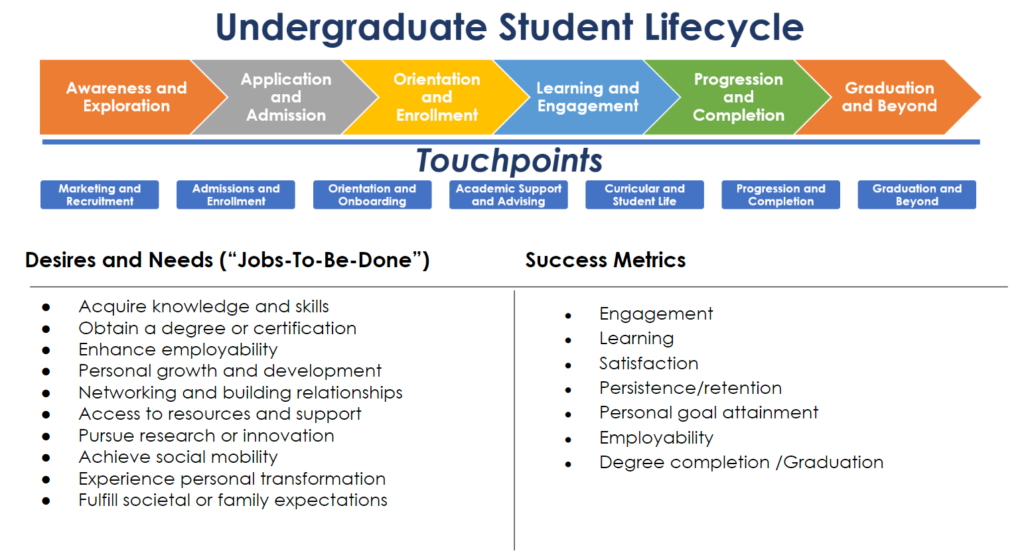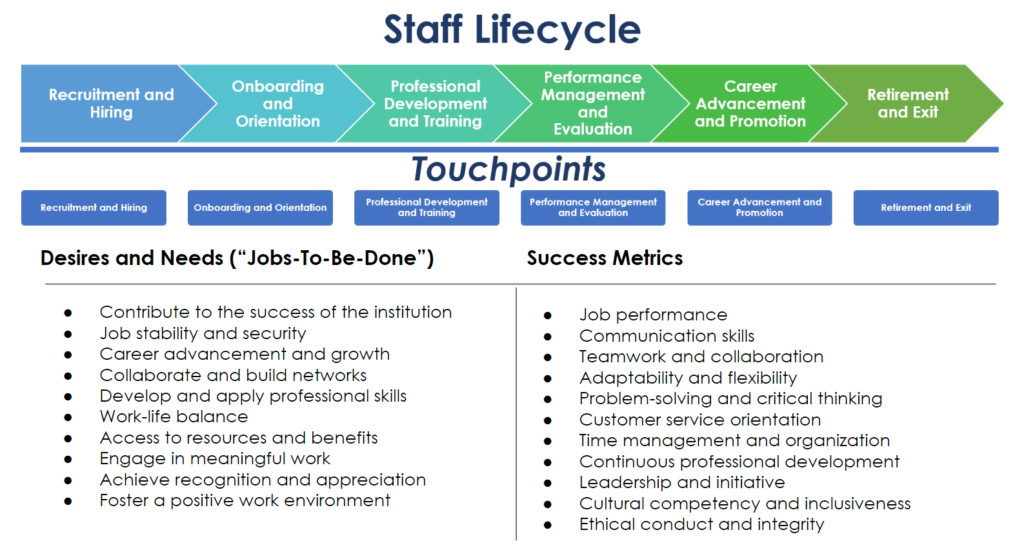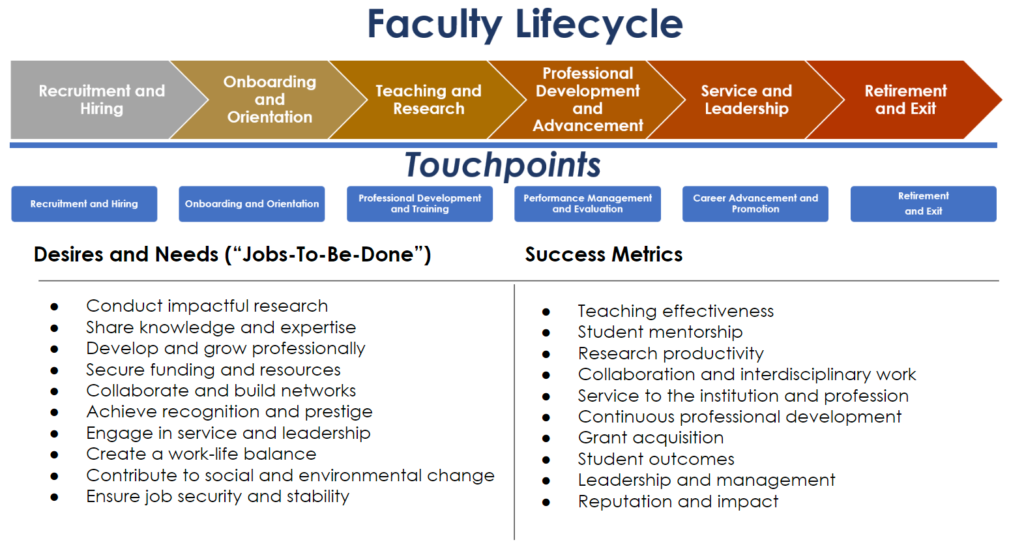As IT leaders and practitioners in higher education, it is essential in our roles to have a fundamental understanding of those impacted by the services and systems we provide. This understanding is a cornerstone for enhancing user experiences, enabling successes, and fostering the achievement of institutional goals. In addition, adopting a framework that ensures equitable access to resources and incorporates fairness into every process is essential.
A faculty member inspired me with the idea of viewing the impact of the work we do in IT and thought, “Joe, it would be nice to understand the experiences of our staff and students so we have some insights into their challenges and we can find opportunities ourselves to assist them. I would like to know that my student employees are getting paid on time and that I can assist a student who may have issues outside the classroom by knowing who to contact in student affairs.“
An international student (female Indian) also shared a frustrating and heartbreaking experience. I spoke with her about her experience on campus, specifically related to IT. She said, “I am a Computer Science Ph.D. student about to graduate. I feel like an impostor sometimes because, throughout my time here, I couldn’t even provision a computer to do my research at this university. The systems are so locked down I have to ask for an IT staff to create a virtual system on my behalf.” She also mentioned that when she finally got access to systems, she didn’t have instructions on installing software to conduct her work and had to figure it out independently.
Working for a campus that is a minority-serving institution (MSI), designated as Hispanic Serving Institution and Asian American Native American Pacific Islander Serving Institution (AANAPISI), as IT providers, we must keep this commitment to diversity, equity, inclusion, and belonging at the forefront of the solutions we implement and in how we provide our services. Access to digital technology as a basic need came to light during the pandemic when our students were required to attend courses and conduct research away from campus. The digital divide became apparent early on when we had to provision Chromebooks and assist students in finding affordable internet access in their local residences.
The experiences above led me to ask this guiding question:
How does information technology positively impact the success of the university by providing the utmost support for staff, faculty, students, and administrators along their life cycles and touchpoints with the university, and in alignment with their unique desires and needs (“Jobs To Be Done”), to help them achieve their goals and contribute to the overall mission of the university?
Understanding our users involves mapping out the desires, needs, aspirations, and success parameters of various university constituents, namely undergraduate and graduate students, staff, faculty, researchers, and administrators. A general understanding of the unique lifecycles and university touch points for the various community members is essential for delivering IT services and solutions that positively contribute to the experience and success of each of these communities. It is imperative, however, to view this understanding through a lens that places equity and fairness at the forefront. This approach aspires to assure every user, regardless of their backgrounds, roles, or circumstances, experiences equal and fair access to technology resources and support. IT providers must align our procedures and policies with these principles, strengthening the commitment to equal opportunities within the university communities.
Incorporating user understanding has numerous benefits for IT providers and those we serve. This user-centric approach assists us in designing and delivering technology solutions that appropriately meet user requirements, ensuring technology supports users’ needs and purposes and enhancing their overall experience. User understanding contributes to increased adoption and engagement, enabling the creation of solutions that resonate with users’ needs and preferences. Finally, understanding users’ backgrounds, contexts, and goals empowers IT providers to communicate and offer support more effectively.
As IT providers, we must incorporate social justice principles into our approach. We should strive for equitable access, ensuring all users have equal access to technology resources and support, promoting inclusivity and social justice. We should aim for transparency in decision-making processes and uphold data privacy and security to maintain trust and respect the rights of individuals within the university community.
By weaving together user understanding, knowledge of their lifecycles, university touchpoints, and social justice principles, we can enhance our effectiveness in contributing to our user communities’ success. We can have a better chance to offer tailored, inclusive, and equitable technology solutions, fostering a culture of fairness and justice. In adopting these principles, we in IT can realize the potential values and provide maximum contributions to the university.

The following are high-level representations of each community’s lifecycles, touchpoints, desires and needs, and success metrics. Included as well is a campus perspective.







As an IT leader, our commitment to social justice including diversity, equity, and inclusion and understanding those we serve are through is through our consistent actions, learning from experience and education, and explicitly stating our commitments. For IT leaders, Educause provides DEI resources and a commitment to diversity statement. Here is my personal commitment. Furthermore, understanding our user communities is by volunteering in non-technical roles such as reading admissions applications, mentoring students and staff, teaching introduction courses, and serving on search committees. Here are some of the volunteer work I have committed to through the years. It also includes actively supporting our staff to do the same.
By understanding the unique needs of our diverse user communities and incorporating principles of social justice into our approach, IT providers in higher education can play a vital role in promoting an inclusive and fair university environment. This approach helps to create tailored, equitable technology solutions that empower users to achieve their goals, fostering a culture of fairness and justice within the university community.
The images above can be downloaded here:
Note: Concept by Joe Sabado and content of the lifecycles, desires and needs, and success metrics primarily provided by ChatGPT and other sources.